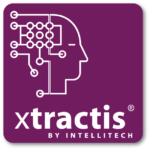Public Use Cases in Health & Pharma
Our Use Cases present the results of XTRACTIS modeling and include complete Benchmarks against Neural Networks, Boosted Trees, Random Forests, and Logistic Regression.
These studies illustrate the ability of XTRACTIS to automatically induce knowledge in the form of predictive and intelligible mathematical relationships from real-world data (public data or authorized private data).
For each application, we show how the induced décision system uses its fuzzy rules to compute explained predictions for new situations, i.e. unknown to the learning data set.
XTRACTIS discovers how to identify foetus heart conditions based on signal characteristics of fetal heart rate and the mother’s uterine contractions. As a result, you get an explainable and accurate automated medical diagnosis.
UC#03 - Release: Sep. 2022 | Update: Mar. 2024
XTRACTIS discovers how to detect breast cancer based on topological characteristics of mammary cells. As a result, you get an explainable and accurate automated medical diagnosis.
UC#04 - Release: Sep. 2022 | Update: Mar. 2024
XTRACTIS discovers how to detect ovarian cancer based on the 15,154 mass-charge ratios coming from the protein spectrum of serum samples, and for a small number of patients. As a result, you get an explainable and accurate automated medical diagnosis.
UC#05 - Release: Sep. 2022 | Uodate: Mar. 2024
XTRACTIS discovers how to detect prostate cancer based on the expression levels of 12,600 genes and for a small number of patients. As a result, you get an explainable and accurate automated medical diagnosis.
UC#08 - Release: Oct. 2022 | Update: Mar. 2024
XTRACTIS discovers how to identify 2 types of lung cancer based on the expression levels of 12,533 genes and for a small number of patients. As a result, you get an explainable and accurate automated medical diagnosis.
UC#12 - Release: Jan. 2023 | Update: Mar. 2024
XTRACTIS discovers how to detect kidney disease based on the patient record and blood measures. As a result, you get an explainable and accurate automated medical diagnosis.
UC#14 - Release: Feb. 2023 | Update: Mar. 2024
XTRACTIS discovers how to detect Parkinson’s disease based on simple voice recordings of patients. As a result, you get an explainable and accurate automated medical diagnosis.

















